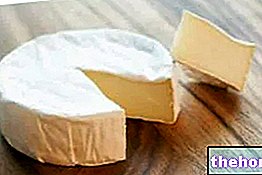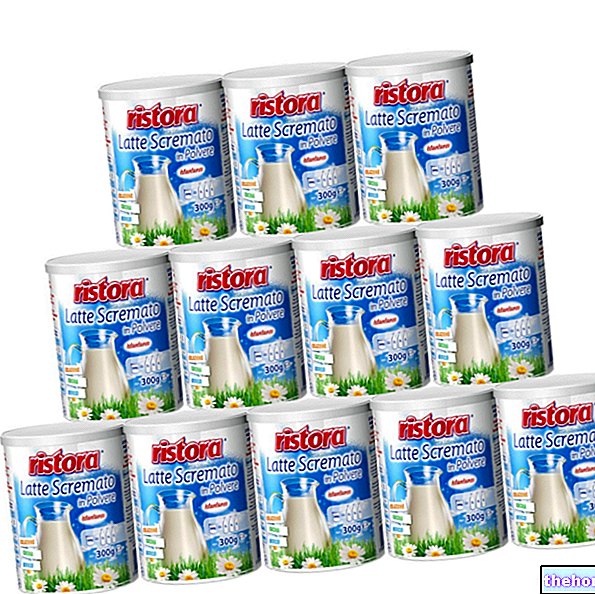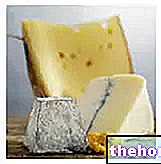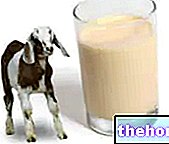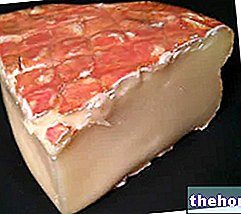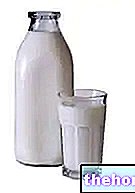Breaking of the curd
The gelatinous mass that has formed by rennet coagulation is broken to favor the purging of the serum. This operation determines the breaking of the curd into more or less small fragments depending on the type of cheese; in the meantime, the mass is kept stirred.
Cooking
It occurs for semi-cooked or cooked cheeses; the curd is brought to temperatures between 38 and 60 ° C for variable times (from 15 minutes to an hour and a half); each type of cheese requires rigorous and constant cooking times. For raw cheeses we skip this step and go directly to putting into shape.
Getting into shape
The curd extracted from the whey is placed in circular molds or molds, perforated to allow the bleeding of the buttermilk, which is further facilitated by a light pressing. For the preparation of soft fresh cheeses it is possible to proceed with a period of stewing in hot-humid rooms for variable times, so as to favor the formation of lactic acid. Hard cheeses, on the other hand, are left to rest and it is the increase in acidity that favors the purging. During the preparation of the curd the activity of the lactic ferments is mild and increases considerably during the ripening period, causing an increase in the " acidity and, thanks to their proteus and lipolytic activity, the release of a series of aromatic compounds.
Surface salting
It can be done dry, rubbing and sprinkling the surface of the wheels with coarse salt, or - in the case of softer cheeses - by immersing the wheels in brine (18-24% NaCl). The salting has the task of protecting the cheese from microbial agents, both in a direct way and by favoring the formation of the crust (thanks to its dehydrating action).
Maturation
It is the period that follows the salting and continues until the cheese has acquired the characteristics of its variety. While the previous phases require, as a whole, about 24 hours, the maturation phase of the cheese can take from a few days up to two years or more (like Parmigiano Reggiano).
During maturation, transformations are made due to milk enzymes (especially in raw milk cheeses) and to the residual activity of rennet (rennin), bacterial (lactic) and non-starter starters (molds, propionic bacteria already present in the milk or later development, in relation to the maturing conditions used). These modifications determine the typical taste and aroma of a cheese, differentiating it from others; they depend on the treatments to which the milk and curd have been subjected (for example, cooking leads to denaturation of the enzymes), but also on the maturing methods.
The various transformations mainly concern the water, lipid, carbohydrate and protein content.
REDUCTION OF WATER CONTENT
As for the water content, this can be reduced from 25 to 60% of the initial quantity; this value moves towards the upper extreme in hard and long-aged cheeses. The reduction of the water content allows the formation of the crust, which has the task of containing the dough and protecting it from "excessive dehydration, keeping it soft at the" internal, and external contamination; in some types of cheese specific microbial strains are inoculated on the rinds, as in the case of cheeses with a floral rind (such as Brie or Camembert); in the latter the particular rind is formed thanks to the development of white mold (Penicillium candidum, P. camemberti, Geotricum candidum).
Some cheeses can also develop a natural microflora - due to molds, yeasts and micrococci - which gives the product its typical color and increases the phenomena of lipolysis and proteolysis (eg Taleggio).
TRANSFORMATIONS IN THE LOAD OF GLUCIDES
The most important is lactose, which is transformed to lactic acid (homolactic fermentation) or to ethanol, CO2 and lactic acid (heterolactic fermentation). Lactate - which gives the curd elasticity and compactness, promotes bleeding and inhibits putrefactive bacterial flora - can undergo propionic fermentation by Propionobacteria, which metabolize it to propionic acid, acetic acid and carbon dioxide; the latter is responsible for the characteristic holes, a phenomenon typical of the maturation of cheeses such as Emmenthal and Gruyère.
In general, lactic acid is salified to calcium lactate, which can cause the formation of crystalline inclusions perceptible on the palate, and transformed into aromatic products; these transformations, typical of "grana" and long-aged cheeses, gradually reduce the presence of lactate and with it the acidity of the product.
TRANSFORMATIONS OF LIPIDS
The fundamental role is played by lipases, which can derive from milk (but are generally sensitive to pasteurization temperature), rennet, bacterial starters and non-starter microorganisms. The lipolytic phenomena determine the hydrolysis of mono-di and triglycerides with the release of glycerol and fatty acids.The release of medium-short chain fatty acids (from C4, up to C8-C10) contributes to the taste and aroma of the cheese; goat and sheep cheeses have a higher percentage content of these fatty acids and are therefore with a more intense and spicy aroma.
TRANSFORMATIONS OF PROTEINS
The major transformations are carried out by the caseins, whose degradation is at the origin of the softening of the paste, its change in color and appearance; furthermore, following the formation of new products, there is the development of the typical flavor and aroma of the cheese. Usually, the proteolytic activity of the enzymes present in the starter bacteria makes the paste softer and creamier, but without degrading it; a strong proteolysis is instead used in the production of particularly soft cheeses, more or less spreadable, such as crescenza and stracchino.
During the ripening period the bacteria ferment lactose to lactic acid; the latter begins to subtract the calcium from the dicalcium paracaseinate; at first this is how monocalcium paracaseinate is formed, which is then further transformed into paracaseinate plus calcium lactate (typical transformation of acid coagulation, which, in this case, occurs during the period of maturation, when the curd is already formed).

In certain types of cheese, after obtaining the curd, it is left to rest in particular conditions of pH and temperature, in order to favor the development of the microbial flora and stop at monocalcium Paraceseinate; this compound has the characteristic of merging with the heat and being able to be pulled into threads, a typical characteristic of mozzarella, scamorza, caciocavallo and fior di latte.
The acid paracaseinate is then subjected to the proteolytic action, from which free amino acids and small peptides are released which contribute to the aroma of the product.
In general, for each cheese a parameter is determined that characterizes its proteolysis, called MATURATION INDEX OR COEFFICIENT (C.M):
C.M. = (Soluble Nitrogen / Total Nitrogen) x 100
The maturation coefficient increases with proteolysis, since the solubilized fraction is made up of degradation products of caseins (soluble nitrogen is given by amino nitrogen, therefore free amino acids, plus ammoniacal nitrogen).
On the basis of this parameter, cheeses with a ripening index can be distinguished:
- very low, below 15, raw or fresh unseasoned cheeses
- low, between 15 and 30, hard cheeses, cooked or not cooked
- high, between 30 and 50, soft cheeses with little mold action
- very high, between 50 and 80, soft cheeses with high development of mold.
PRODUCTION OF ANTIBIOTICS
Lactic bacteria have the ability to produce substances with antimicrobial action (natural antibiotics or lantibiotics) to prevent other bacteria from settling in the same environment and stealing their nourishment. These substances, among which the nisin produced by some strains of S. lactis and active against positive GRAMs, they are particularly useful for preventing the qualitative and hygienic deterioration of the product during storage.
Other articles on "Cheese: production phases"
- cheese coagulation
- cheese
- nutritional value cheese
- low-fat cheeses
- cheeses calories
- cheeses rich in calcium

